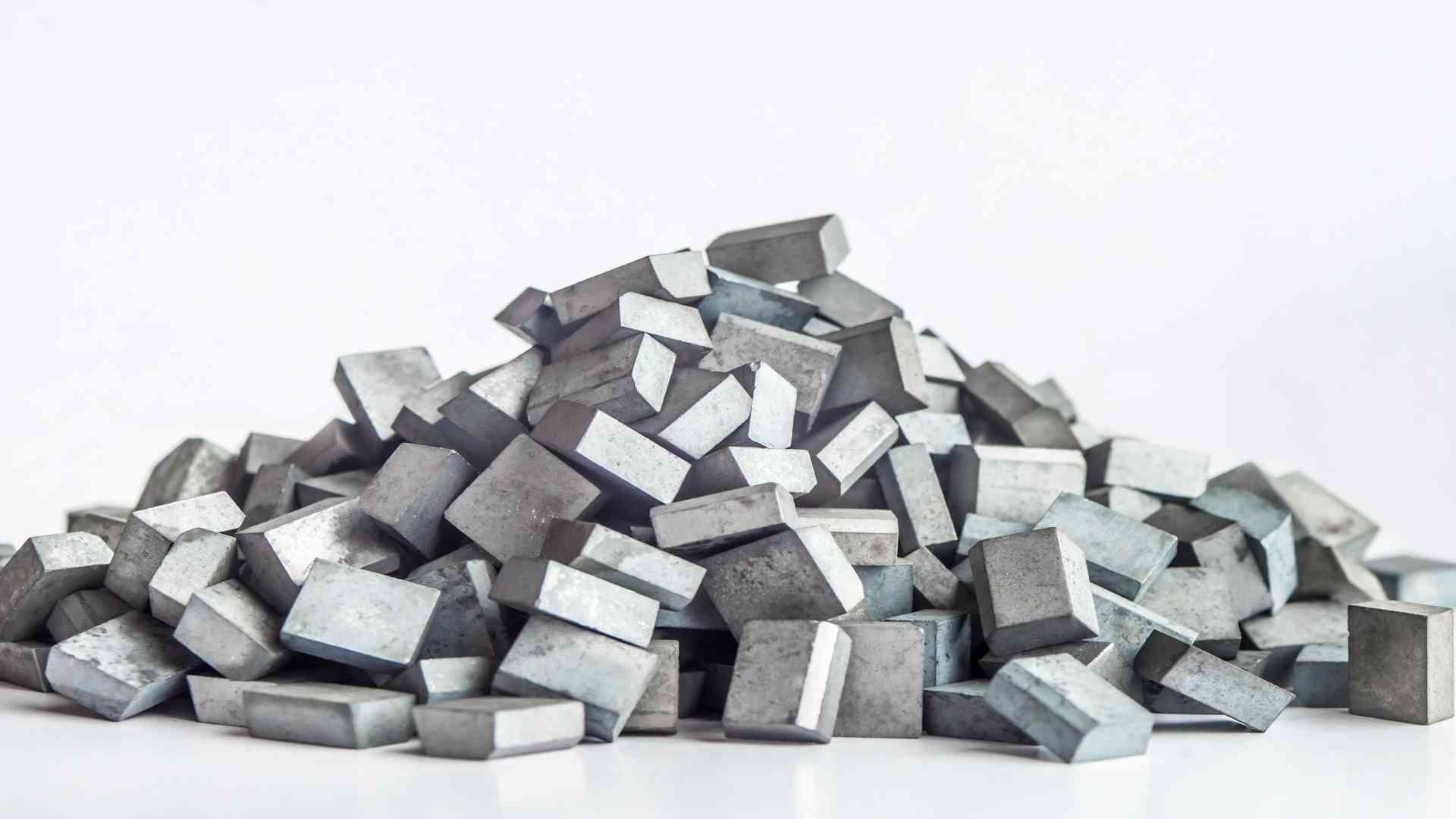Carbide – A Hard, Durable Metal
Carbide is a hard material used in various industrial and machining applications. Its synthesis usually begins with synthesizing the respective metal hydride, which is then treated with carbonaceous materials to produce the carbides. The resulting carbides are extremely hard and wear-resistant.

Carbide
Carbides: Metal-Based Carbon Compounds
Carbides are carbon-based compounds containing a less electronegative element, typically a metal or metal oxide, and have the symbol CB. Some common ones include calcium carbides, boron carbides, tungsten carbides, and silicon carbides, analyzed extensively below.
Calcium Carbide
Calcium carbide (CaC2) is a chemical compound that is a highly reactive material with numerous industrial applications.
When the compound reacts with water, it emits acetylene gas, a flammable gas used in welding and cutting torches. Acetylene gas can also be used to power carbide lamps and heating appliances. CaC2 is also used to manufacture calcium cyanamide, a fertilizer. It is also used to make vinyl chloride and to desulfurize iron.
Boron Carbide
Boron carbide (B4C), also known as black diamond, is an incredibly hard and durable material in many applications. It has a VHN score of 30 GPa, which makes it one of the hardest known substances on Earth, next to c-BN and diamond.
B4C powder is used as an abrasive in polishing and blasting, as knives and cutting tools, and as a neutron absorber in nuclear reactors. Its low density makes it ideal for use in bulletproof vests and body armor. The material is also used in tank armor to protect against high-velocity kinetic energy penetrators.
Tungsten Carbide
Tungsten Carbide (WC) is a chemical substance of tungsten and carbon in equal parts. It is a grey-colored, extremely hard material (Mohs hardness of 9-9.5, indicating that it is scratch-resistant) frequently used in industrial applications where durability and wear resistance are required.
WC is also used to manufacture cutting tools, drill bits, and other tools that are subject to high levels of wear and tear. In addition to its industrial uses, it is also used in producing jewelry and other consumer products. WC is an excellent neutron reflector in early studies of reactive nuclear species, especially for weapons.
Silicon Carbide
Silicon Carbide, also known as SiC, is a silicon and carbon compound. It occurs naturally in deposits as rare minerals such as moissanite. Still, it can also be generated by reheating grains with each other at high temperatures for hours on end – a process known as sintering- until they turn hard enough even to bond into durable ceramic materials used in a variety of industries such as car clutches, car brakes, and bulletproof vests where strength is critical.
The compound’s electronic applications, including light-emitting diodes (LEDs) and semiconductor power devices, are being designed for high-power application areas in the automotive and industrial markets.
Aluminum Carbide
Aluminum carbide is a chemical compound with the formula Al4C3. It generally occurs as pale yellow to brown particles and is stable up to 1400 degrees Celsius. When this material comes into contact with water, it decomposes and emits methane gas.
In addition, finely dispersed Al4C3 particles within an aluminum matrix can help reduce the molecule’s tendency to creep. This is particularly true in the presence of SiC particles. Finally, Al4C3 can be used in high-speed cutting tools as an abrasive. In terms of hardness, this substance is comparable to topaz.
Carbide Types
Carbides are classified broadly based on the chemical bonding between their constituent atoms. Carbides are classified into three types: salt-like or ionic, covalent, and interstitial.
Salt-like or Ionic Carbides
These compounds containing discrete carbon anions can take C4, also known as methanide.
Covalent Carbides
These are two completely covalent carbides. They are made up of the two elements that are the closest in size and electronegativity to carbon, boron, and silicon.
Interstitial Carbides
These combine large transition metals and carbides. Because (C4-) take up the empty spaces of the closed-packed metallic structure, they are extremely hard and brittle.
Intermediate Transition Metal Carbides
Carbides have a transition metal ion below the critical 135 pm. These carbides have more complex structures than others and are not interstitial. Carbides have properties that make them an ideal material for many applications. They’re strong and resist corrosion, making it possible to use carbides in areas where this type of metal would be too costly or difficult to obtain otherwise, such as rocket engines, which require high temperatures without any risk of overheating their incombustible nature. In addition, they provide very good wear resistance and are used in turbine blades, circuits, and corrosion-prone environments.





